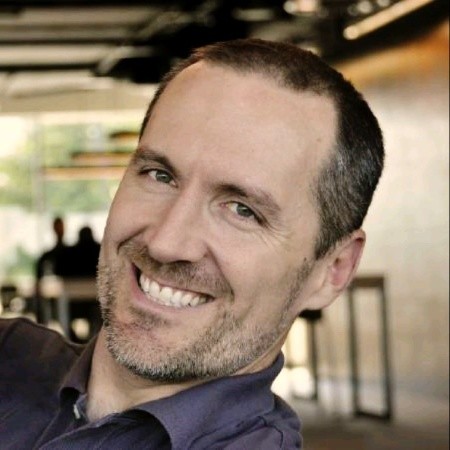How to Reach Non-Traditional, Prospective Undergrad Students More Effectively
Summary: A recent survey to US LinkedIn members found that millions of members are interested in enrolling in a bachelor’s degree program. It’s become more challenging for universities to achieve their enrollment goals and many have responded by attracting non-traditional students, who make up 37% of all undergraduate enrollments. Efficiently reaching these prospective students can be difficult because less than 0.2% of adults 25-49 years old start an undergraduate program each year. LinkedIn provides marketers an efficient way to reach prospective, non-traditional students because it is used by millions of professionals who want to advance their careers by earning an undergraduate degree.
Millions of LinkedIn members don’t have a bachelor’s degree
In the US, the majority of adults (66%), 25 years or older, do not have a bachelor’s degree, according to the National Center for Education Statistics. Since LinkedIn members reflect the workforce, it’s no surprise that many US members do not have a bachelor’s degree. In fact, there are 13M LinkedIn members working in an individual contributor role, with 1-11 years of experience, who don’t have a bachelor’s degree.
We recently surveyed these members to find out how many were interested in earning a bachelor’s degree.
About 1/3 of these members are interested in earning a bachelor’s degree
The table below shows the results of our survey, broken out by specific member segments. In short, a large percentage of LinkedIn members who don’t have a bachelor’s degree are interested in earning one. This is true across the broad segment of individual contributors (29%) and among individual contributors who specifically work in an IT function (46%) or as a registered nurse (34%). Furthermore, members in the military are also very interested in earning a bachelor’s degree (41%), regardless of their years of experience.
Among the members who were interested in starting a bachelor’s degree, at least half were interested in starting a program within the next 12 months.
It makes sense that LinkedIn’s career-focused members are interested in bachelor’s degrees, since 71% of non-traditional students want to earn a degree that will expand their career options, according to a report done by Public Agenda.
Why is this survey data important to universities?
Attracting non-traditional students is vital to achieving enrollment goals. This year, about 17M people will be enrolled in undergraduate programs at degree-granting institutions in the US (first-time and continuing students). This is almost 6x the number of people enrolled in graduate programs. While the undergraduate market is huge, many colleges have struggled to achieve their enrollment goals due to various factors, according to U.S. News and World Report.
To address shrinking class sizes, schools have tried to augment their enrollments with “non-traditional students”. This segment is broadly defined as students who are 25 years or older, but 90% are 25 to 49 years old.
Non-traditional students now make up a significant percentage of undergraduate enrollments. Recent estimates range from 27% to 37%.
It’s difficult to efficiently reach non-traditional students
It’s relatively easy to reach US adults with marketing messages. For example, a university’s ad on an airport billboard or on the side of a bus will undoubtedly be seen by many US adults. Universities, however, need to be more strategic in their effort to reach adults who are interested in an undergraduate degree. According to the US Census, there are roughly 108M people 25 to 49 years old. Each year, less than 0.2% will enroll, for the first time, in an undergraduate program, according to the National Student Clearinghouse Research Center.
Universities face increasing competition for non-traditional students
Over the past decade, the number of non-traditional students has declined by 17% across undergraduate and graduate programs. This year, it’s estimated that there are ~1.5M fewer non-traditional students compared to the peak in 2010. A strong economy and job market are thought to be the main drivers of this decline.
Furthermore, the number of institutions offering 4-year undergraduate degrees has increased by 18% between 2000 and 2018. The competition for attracting non-traditional undergraduate enrollments may be at its highest level ever.
LinkedIn provides an efficient and effective way to reach non-traditional students
First, LinkedIn members are excellent prospects for universities trying to attract non-traditional undergraduate students. LinkedIn members skew much higher on two attributes that predict enrollment and degree completion: financial-resiliency and grit. And the recent survey shows that millions of members are interested in starting a bachelor’s degree program in the next 12 months.
Second, LinkedIn’s advertising platform provides unique targeting, based on first-party data, that enables universities to efficiently reach members who are interested in their undergraduate programs. The following LinkedIn targeting is 29x more efficient than an ad on the side of a bus at reaching high-intent, non-traditional, prospective students in the US:
- Their current job is an entry or a senior-level, individual contributor position
- They have 1-11 years of experience
- They don’t have a bachelor’s or graduate degree
In essence, LinkedIn drives high-quality student and sustainable university growth above other digital platforms. If you’re looking to increase enrollment, look no further than LinkedIn. For more information, simply contact your LinkedIn Marketing Solutions representative.






